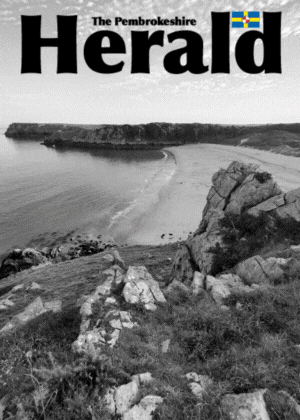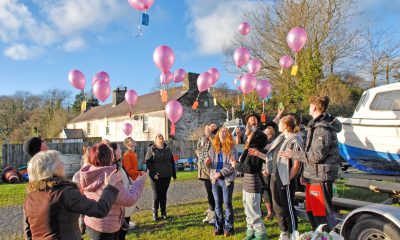Community
Treasure discovered from Bronze Age and Roman era in South Wales and Powys

FIVE treasure finds, including three hoards and two grave groups from the Bronze Age and Roman era, were declared as treasure on Tuesday 11th July 2023 by Patricia Morgan, the Area Coroner for South Wales Central.
A burial group from the Bronze Age consisting of a small gold penannular ring and fragments of a burnt wooden comb (Treasure Case 17.13) was unearthed by Rubicon Heritage Services (Red River Archaeology Group) during archaeological excavations in the St Nicholas and Bonvilston Community on 28th July 2017. The discovery was made as part of the archaeological work preceding the A4426 Five Mile Lane improvements road scheme, funded by the Welsh Government and executed by Cyngor Bro Morgannwg – Vale of Glamorgan Council. The two artifacts were found accompanying a human cremation burial in a small burial pit. The burial and the artifacts were meticulously recorded before being removed. A license was obtained from the Ministry of Justice, allowing the removal of the ancient human remains.
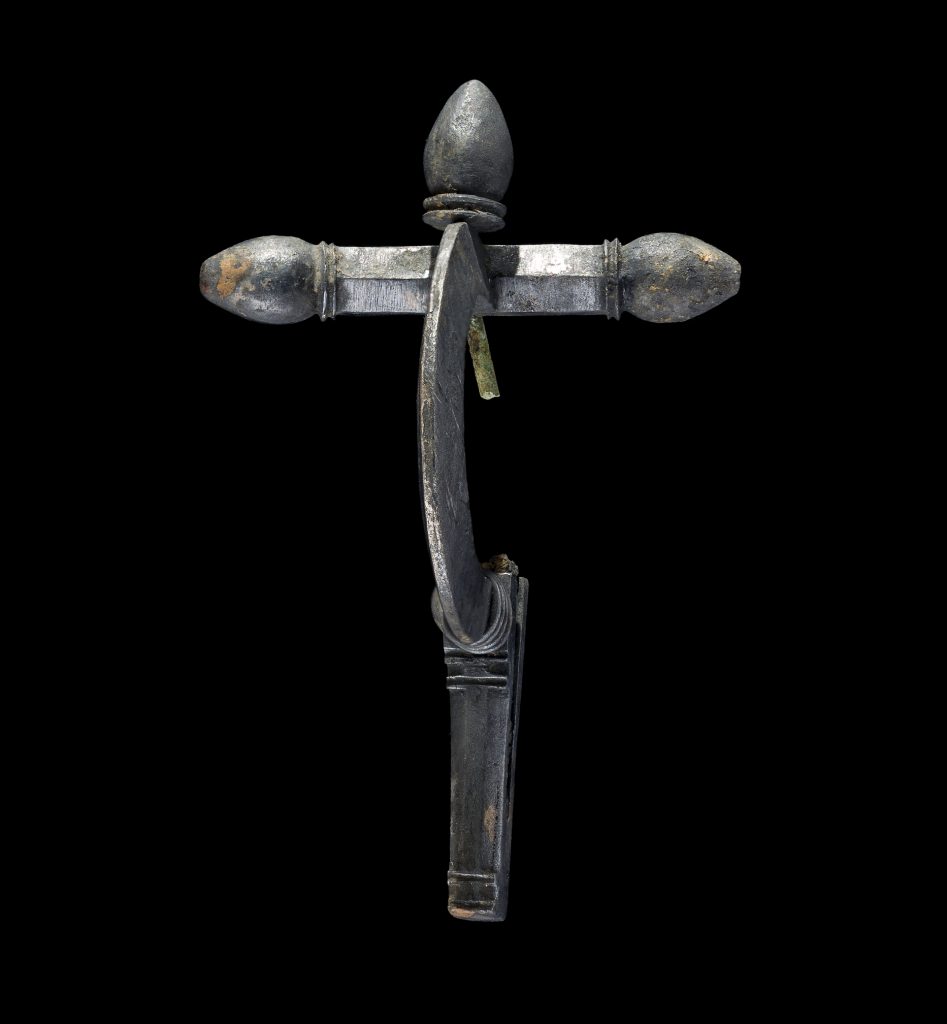
The gold penannular ring, measuring just 1.1cm in diameter, is a beautifully crafted piece decorated with a finely worked chevron or herringbone pattern. It represents an early example of a hair-ring, believed to have been used for hair decoration. The fragmentary wooden comb, with eight narrow and parallel teeth, is in a fragile state. It is an incredibly rare organic artifact that survived due to its charred state. These two objects, dating back to the Middle Bronze Age (1300-1150 BC), were carefully chosen as grave goods to accompany the deceased in the afterlife.
Adam Gwilt, the Principal Curator for Prehistory at Amgueddfa Cymru – Museum Wales, commented, “This cremation burial, with its accompanying gold ring and wooden comb, provides us with a glimpse into life and death during the Bronze Age. The gold ring is an early, well-crafted, and small example of its kind, offering new insights into the development of hair-rings as early forms of jewelry in Britain and Ireland. This grave is just one example of the wealth of prehistoric burial evidence being discovered across the Vale of Glamorgan, highlighting the richness, diversity, and significance of this archaeology and enhancing our understanding of the past.”
Amgueddfa Cymru – Museum Wales is interested in acquiring this discovery after an independent valuation by the Treasure Valuation Committee. The artifacts will become part of the broader collection and archive from this archaeological excavation, which is destined for the national collection.
David Gilbert, the Project Manager for Rubicon Heritage Services (Red River Archaeology Group), stated, “The gold ring is undoubtedly the most eye-catching object accompanying the cremation. However, the most important artifact is what may initially seem more mundane: the wooden comb. It is an unparalleled find in Wales, if not the UK. Together, these objects add a human element to our work, highlighting their significance to the person buried with them. They demonstrate the attention to detail and pride in appearance often missing from depictions of prehistoric people on television or in films. This discovery emphasizes the significant contribution made by commercial archaeology to advancing our detailed knowledge of the history of Wales.”
Another Roman burial was excavated by Rubicon Heritage Services (Red River Archaeology Group) in April 2017, as part of the archaeological work preceding the A4426 Five Mile Lane improvements road scheme, funded by the Welsh Government and executed by Cyngor Bro Morgannwg – Vale of Glamorgan Council. The burial included a silver crossbow brooch, the remains of an iron sword, and hobnails from a pair of shoes. This find underscores the valuable contribution of commercial archaeology in expanding our understanding of Wales’ history. The silver crossbow brooch, over 300 years old, falls under the remit of the Treasure Act (Treasure Case 17.06).
Crossbow brooches, a common type of Roman bow brooch, are predominantly made of copper alloy, although examples made of silver or gold exist. The sword discovered belongs to the longer type used by the Roman army in the third and fourth centuries AD, corresponding with the dating of the brooch.
Evan Chapman, the Senior Curator for Archaeology at Amgueddfa Cymru – Museum Wales, stated, “To the best of my knowledge, this is the first example of a Roman silver crossbow brooch found in Wales. Crossbow brooches appear to be associated with the late Roman army and civil service, possibly originally serving as badges of office. However, it has been suggested that elements of military dress, including crossbow brooches, were embraced by the wider elite. The presence of the sword supports the military connection in this case. Regardless of direct affiliation with the Roman army, the silver brooch indicates an individual of elite status.”
Amgueddfa Cymru – Museum Wales is interested in acquiring these objects following an independent valuation by the Treasure Valuation Committee. The artifacts will remain together with the rest of the finds from the excavations, which are already destined for the national collection.
Rachel Morgan, the Project Archaeologist for Rubicon Heritage Services (Red River Archaeology Group), remarked, “The burial of a young man in military attire was an unexpected discovery within a Roman field system. The silver crossbow brooch found with the individual signifies his important status within the military or wider society. His death occurred sometime between the mid-3rd to late 4th century, during which the brooch had become a symbol of imperial administrators. Therefore, he was unlikely to have been an ordinary soldier and evidently possessed significant wealth. Isotope analysis also revealed that he was not from the local area but likely grew up further east, possibly from the Welsh borders or beyond. The question arises: what was this wealthy man doing on a farm in south Wales when he died?”
A Bronze Age hoard of tools and weapons (Treasure Case 20.22) was discovered by Richard Griffiths on 17th December 2020 while using a metal detector in a boggy field in the Coychurch Higher Community, Bridgend. The hoard consists of seven bronze artifacts, including four fragmented socketed axes, a spearhead, a palstave, and a casting jet. Dating back to the Late Bronze Age (1000-800 BC), the hoard was originally buried in a small and isolated pit, likely as a religious offering to the gods. Relatively few hoards from this period are known in the uplands of south Wales, making this find crucial in enriching our knowledge of the people who lived in the area around 3,000 years ago.
An investigation of the findspot was carried out in August 2022 by a team from Amgueddfa Cymru and the Portable Antiquities Scheme Wales (PAS Cymru), with assistance from the finder.
Richard Griffiths, the metal detectorist who discovered the hoard, expressed his excitement, saying, “I was thrilled to find this Bronze Age hoard, and it’s truly special to know that my find is now a part of our shared history. To think that I was the first person to hold these objects since the last person who used them, thousands of years ago, is a remarkable feeling. I enjoyed being involved with the museum archaeologists during their geophysics work and the small dig. It was fascinating to see how they carefully dug and recorded everything. The unexpected discovery of the buried spearhead added another interesting twist to the story!”
Chris Griffiths, a researcher at Amgueddfa Cymru, who led the investigation of the findspot, commented, “The opportunity to study the location of this hoard was invaluable, and we are extremely grateful for the cooperation of the landowner and Richard throughout this process. The discovery of a bronze spearhead during the investigation was the ‘icing on the cake,’ providing us with fascinating insights into how Bronze Age people interacted with this upland landscape.”
Amgueddfa Cymru – Museum Wales is interested in acquiring this find after an independent valuation by the Treasure Valuation Committee.
David Howell, the Engagement Officer for the Portable Antiquities Scheme in Wales (PAS Cymru), stated, “For 25 years, the Portable Antiquities Scheme in Wales has been working to preserve knowledge and information about Welsh archaeology. During this time, PAS Cymru has recorded over 90,000 artifacts, establishing connections with the metal-detecting community and finders in general, to ensure that information about Welsh archaeology and history is recorded and shared with the nation.”
A Bronze Age hoard (Treasure Case 21.15) was discovered by Peter Anning while metal-detecting in a pasture field in the Pontprennau Community, Cardiff, on 30th October 2020. The hoard was initially reported to Mark Lodwick through the Portable Antiquities Scheme in Wales (PAS Cymru). It includes four fragments of a blade from a single leaf-shaped sword and two casting jets, which were generated during the casting of bronze artifacts in clay molds. The sword fragments belong to a type known as an Ewart Park sword, and one of the casting jets was created during the casting of a South Wales type socketed axe. These findings indicate that the hoard dates back to the Late Bronze Age, around 1000-800 BC. The artifacts were deliberately buried together in a small pit, most likely as a religious offering.
The Museum of Cardiff is interested in acquiring this hoard for its collection, pending an independent valuation by the Treasure Valuation Committee. The sword would be the museum’s first of its kind and a valuable addition to their Bronze Age archaeology collection, which already includes a socketed axe. The casting jets will contribute to the narrative surrounding the production of such axes in Bronze Age Cardiff. By acquiring this hoard, the museum will be able to expand their storytelling of this era and their collection from the Pontprennau area of Cardiff.
Chris Griffiths, a doctoral student at the University of Reading and Amgueddfa Cymru – Museum Wales, commented, “It is rare to find multiple joining pieces of swords from south Wales, making this hoard from Pontprennau Community, containing four blade fragments from a single sword, a significant new discovery. Prior to burial, the sword appears to have been deliberately broken into pieces, with some missing fragments possibly being recycled to create other objects. The way in which this sword was broken, combined with the presence of two casting jets, suggests the involvement of a local bronzesmith in creating this hoard, allowing us to imagine the lives of people who lived in this part of Cardiff around 3,000 years ago.”
A small hoard of Roman coins (Treasure Case 21.18) was found by Shawn Hendry and Chris Perkins in May 2021 while using metal detectors in a pasture field in the Glascwm Community, Powys. The coin group comprises six silver coins, known as denarii, ranging in date from 32 BC to AD 161. The coins feature representations of Mark Antony, as well as the emperors Titus, Hadrian, and Antoninus Pius. The latest coin in the group could have been minted as late as AD 161, indicating that the coins were likely lost together between AD 145 and 165. Most of the coins were in circulation for a long period before they were lost, and the earliest coin, belonging to Mark Antony (32-1 BC), is highly worn. The coins were probably lost as a small purse group or as a small hoard.
The Radnorshire Museum is interested in acquiring this hoard, following an independent valuation by the Treasure Valuation Committee.
Amgueddfa Cymru is a charity and a family of seven national museums and a collections center located across the country. The aim of the organization is to inspire everyone through Wales’ story, at the museums, in communities, and online. Admission is free, thanks to funding from the Welsh Government, and everyone is welcome.
To learn more about Amgueddfa Cymru’s seven museums, follow them on Twitter, Instagram, or Facebook.
Community
Cilgerran school could be discontinued as consultation launched

A CONSULTATION on proposed changes for a north Pembrokeshire school, which attracted a near-400-strong petition in opposition to the council, has been launched.
At its May meeting, Pembrokeshire County Council considered a report of the School Modernisation Working Group which outlined the findings of a review of education provision in the Preseli area.
“In particular, the review considered the extent of surplus school places in the area, set against a significant decline in the pupil population,” the council in its consultation on proposals for discontinuation of Cilgerran Church in Wales Voluntary Controlled School has said.
A later July meeting of the council, following May’s agreed consultation with St David’s Diocese, backed a general consultation to discontinue Cilgerran Church in Wales Voluntary Controlled School, and to establish it as a 3-11 community school.
The consultation was launched on December 16 and runs to January 30.
Hundreds have opposed the proposed changes, with a petition, on the council’s own website opposing the changes recently closed after gaining 391 signatures.
Any petition of between 100 and 499 signatures triggers a debate at one of the council’s Overview and Scrutiny Committees, and any over 500 a debate at full council, meaning this petition will be heard by committee members at a later date.
The proposals for Cilgerran are part of a wide range of potential education changes in the county.
Two petitions, opposing the potential closures of Manorbier and Ysgol Clydau schools, were recently heard at full council and a further petition opposing the potential closure of Stepaside School has recently been launched.
The Cilgerran e-petition, created by Louise Williams, raised concerns including the school could become part of a federation, a loss of permanent head teacher on site, a shared head teacher would have to oversee several schools, loss of funding control and the ability to maintain the school’s current healthy and stable funding, and a loss of commitment to the church, in turn could impact on the school’s and pupils values, beliefs and cultural beliefs.
It said: “Ysgol Cilgerran VC school has strong links with the Church community in Cilgerran and we believe this will have a negative impact on the children who attend the school, the community of Cilgerran and the links between the two.
“We are proud of our school ethos and values which are strengthened by our links with the church. The school has close and strong relationships with our Church in Wales federation governors one of which is also our safeguarding governor.
“Our Church Federation governors work closely with the school and are regular visitors to the school and the children. They provide vital support and guidance to the school and have a positive impact on the Children’s education. We believe these links will be weakened by this proposal to remove our VC status and we believe this is an un-necessary action.”
Community
‘Harrowing’ distress now the norm for unpaid carers in Wales

“HARROWING” levels of distress have become the norm for unpaid carers in Wales, a committee has heard, with charities warning of a support system “set up to fail”.
Kate Cubbage, director of Carers Trust Wales, told the Senedd’s health scrutiny committee: “There are too many carers who are reaching crisis point without any support.”
Ms Cubbage explained that most councils are supporting fewer than 500 carers, warning: “There are really, really high levels of unmet need within our communities.”
She told Senedd Members that staff are receiving trauma training to support their mental health due to the levels of distress they are seeing among carers.
Ms Cubbage pointed to a University of Birmingham study which found an increased suicide risk among unpaid carers akin to that of veterans who have seen active service.
“One in eight carers has made a plan to end their own life,” she said, calling for carers to be specifically considered in the Welsh Government’s suicide prevention strategy.
“One in ten has made an attempt… at a time when the average local authority has support plans for less than 0.5% of the caring population.”
Warning of deepening poverty in Wales, the witness expressed concerns about a 31% poverty rate among carers – “far higher” than the 22% in the wider population.
Ms Cubbage added that young carers miss more than six full school weeks each year, compared with pupils without caring responsibilities who miss nearer two weeks.
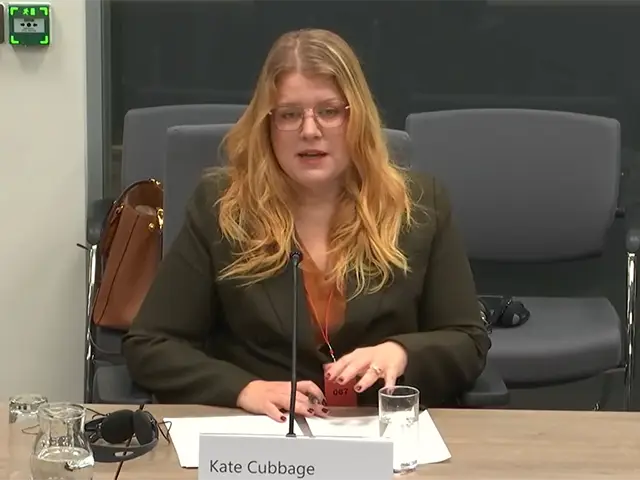
She told the health committee: “It’s no wonder young carers are achieving less at school. They are less likely to go on into further and higher education.
“And if they do make it to university, they’re less likely than their peers to actually graduate.”
Reflecting on a personal note, Ms Cubbage, a parent carer, said her autistic son has accessed services from ophthalmology to audiology over the past 16 years.
“I have never once been signposted to anything that would suggest that I am an unpaid carer or that I can access support… That kind of lived experience is really important.”
Rob Simkins, head of policy at Carers Wales, added: “Things are getting worse: anecdotally, we see that through our services but also that’s what the research tells us.”
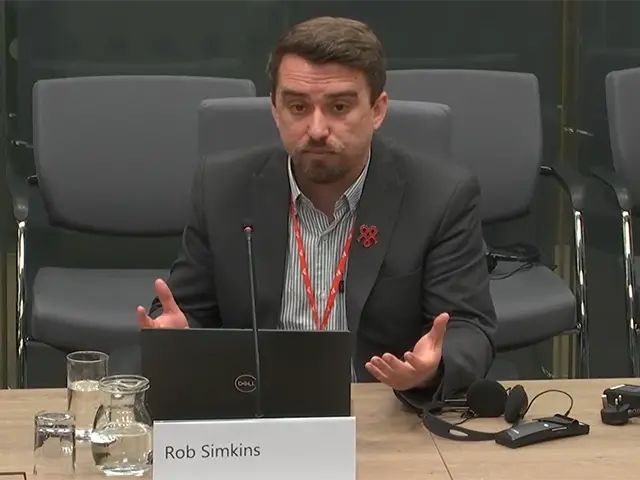
He pointed to a Carers Wales survey which has shown a “shocking” 53% increase in the number of carers cutting back on food and heating.
Giving evidence on Wednesday December 17, Mr Simkins warned of a 39% increase in the number of carers reporting “bad” or “very bad” mental health since 2023.
“All the evidence that we’re collecting shows that this is going in one direction,” he told the committee, adding: “And that’s the wrong direction. It’s a bleak context.”
Mr Simkins said census data shows about 310,000 unpaid carers in Wales but research indicates the number could be nearer 500,000 – roughly 15% of the population.
He cautioned that charities across the country, including Carers Wales, are seeing real-terms cuts in funding from the Welsh Government every single year.
Mr Simkins warned of a “shocking” lack of data and a system “set up to fail” more than a decade on from the then-Assembly passing the Social Services and Wellbeing (Wales) Act.
Warning some councils cannot quantify how many carers’ assessments they could carry out over 12 months, he asked: “How on earth are you meant to collect data from unpaid carers and plan services if you can’t even figure out how many you can assess?”
Asked about carers’ assessments, he highlighted a lack of capacity within councils as he warned a “pitifully low number of carers go on to get any support at all”.
Greg Thomas, chief executive of Neath Port Talbot Carers Centre, told Senedd Members the voluntary sector is being increasingly asked to plug gaps without necessary funding.
He warned the jam is having to be spread “ever-more thinly”, creating a tension between reaching as many people as possible and not wanting to compromise quality of support.
“We’re not quite saying ‘no’ to people,” he said. “But we’re having to say a qualified ‘yes’ about what we’re able to offer… We’re massively overstretched, massively oversubscribed.”
Mr Thomas told the committee the carers’ centre has the required reach and expertise, concluding: “It’s almost give us the tools and we can do the job.”
If you have been affected by anything in this story, the Samaritans can be contacted for free, 24/7, on 116 123, or by email at [email protected].
Community
Pembrokeshire council tax rates could go up in 2026
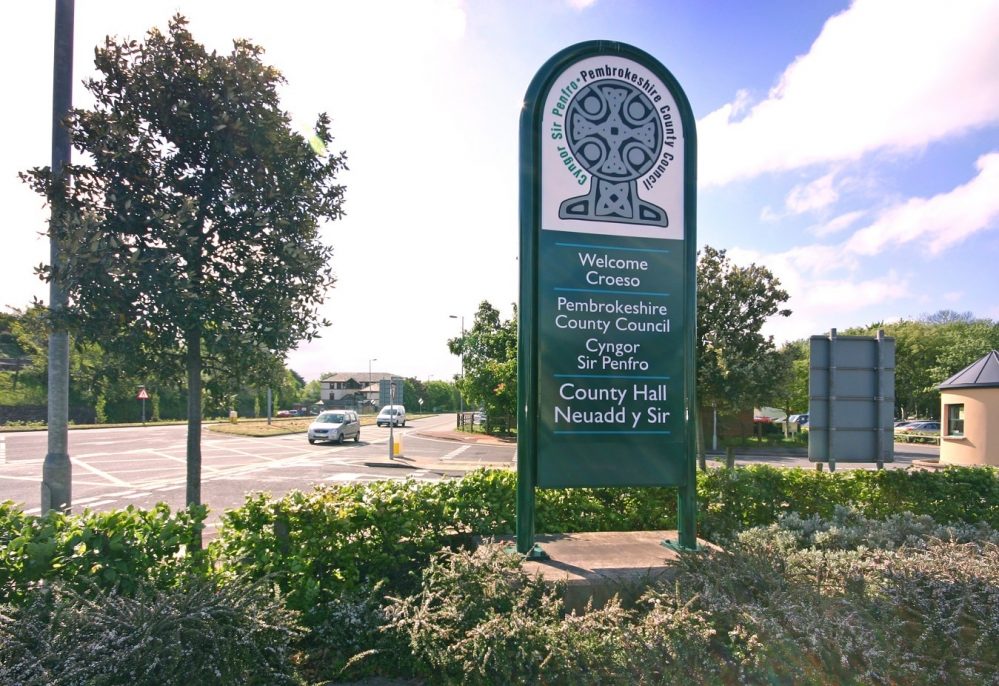
THERE’S just a few days left to have your say on Pembrokeshire’s budget setting for the next financial year, which includes the potential for huge increases in council tax.
Pembrokeshire’s financial situation for next year is some £4m better off after a higher settlement from the Welsh Government, but the council still faces difficult decisions.
While council tax makes up a proportion of the council’s annual revenue, a crucial area of funding is the Aggregate External Finance (AEF) rate from Welsh Government.
Pembrokeshire was to receive a 2.3 per cent increase on its settlement, a total of £244,318,000, amounting to an extra £5,493,000, placing it at joint 13th of the 22 local authorities in Wales.
Now, following a Welsh Government and Plaid Cymru agreement, local authorities including Pembrokeshire have received a better financial settlement.
Speaking at the December meeting of Pembrokeshire County Council, while presenting a report on the outline draft medium term financial plan (MTFP) 2026-27 to 2028-29, Cabinet member for finance Cllr Alistair Cameron said the recent rise in the financial settlement from the Welsh Government had decreased the expected funding gap for the next financial year for the county from £17.7m to £13.6m, but stressed: “There are still increased pressures we are going to have to face.”
The closing date for completed responses to the public consultation is January 4.
The council, in its online consultation, says there are limited ways that the funding gap can be met:
- Increase the rate of council tax charged (each one per cent increase generates approximately £907,000 of additional income).
- Change the way services are provided and delivered – (efficiency gains, reduce what council does etc).
- Increase the amount charged for some services
Cllr Alistair Cameron, Cabinet Member for Corporate Finance and Efficiencies, has said: “It is vitally important that we get the views of as many members of the public as possible to help shape our future proposals with your priorities at the forefront.
“Everyone will be aware that it is increasingly difficult to balance the growing demands on the council but we are determined to put together a budget that enables us to continue to provide essential services for the people of Pembrokeshire.”
The actual setting of the budget and related council tax level along with any potential savings and cuts, will be decided at a later date, with committee scrutiny ahead of Cabinet considering a revised draft budget on February 9, before it is recommended to full council on February 20.
-

 Crime3 days ago
Crime3 days agoMilford Haven man jailed after drunken attack on partner and police officers
-

 News6 days ago
News6 days agoDyfed-Powys Police launch major investigation after triple fatal crash
-

 Crime3 days ago
Crime3 days agoTeenager charged following rape allegation at Saundersfoot nightclub
-
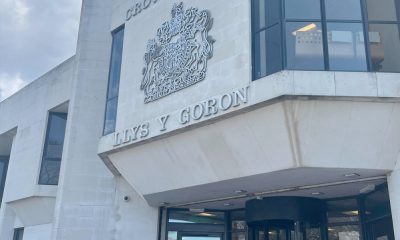
 Crime4 days ago
Crime4 days agoMan charged with months of coercive control and assaults
-

 Crime5 days ago
Crime5 days agoMan sent to Crown Court over historic indecent assault allegations
-

 Crime7 days ago
Crime7 days agoMan spared jail after baseball bat incident in Milford Haven
-

 Crime5 days ago
Crime5 days agoMilford Haven man admits multiple offences after A477 incident
-

 Crime4 days ago
Crime4 days agoWoman ‘terrified in own home’ after ex breaches court order









